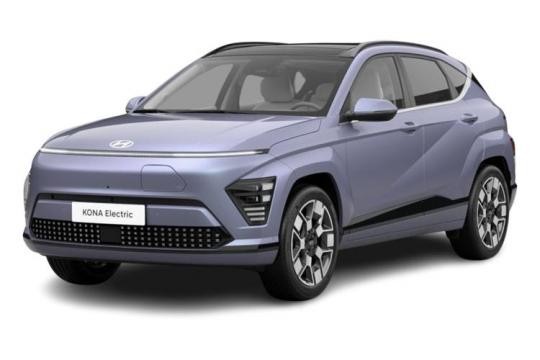Not The Car For You?
Let our experts help you find the perfect car, contact us today.

 In Showroom
Compare Vehicle
In Showroom
Compare Vehicle







Vehicle images are for illustration purposes only.

Fetching our latest prices.
Contact us
Contact us for an accurate price. You can enquire below or call us on 0330 056 3331
ONLY £448.52pm
Leasing type:
Scanning over 2 million quotes to bring you the best price
Excellent personal customer service
Free nationwide delivery and road tax
Full manufacturer warranty
Fuel Type
Electric
Transmission
Automatic
No of Seats
Seats
Efficiency
MPG
Emissions
0 G/KM
No of Doors
5 Doors
Reversing Camera
Parking Sensors
Sat Nav
Cruise Control
DAB Radio
Alloy Wheels
Hyundai Kona Electric Hatchback 5 Door Hatch 48kWh Advance Comfort Pack Auto
Success! Your quote is on its way to your inbox now.

One moment please, we're just building your quote.
Battery Voltage:
295V
Battery Capacity:
48.400
Payload:
420
Roof Load Limit:
100kg
Turning Circle (Kerb to Kerb):
10.60
Emissions Free Range:
234 Miles
WLTP - Electric Range Combined:
234 miles
Boot Capacity (Litres):
466 Litres
CAP ID:
103,321
CAP ID:
103,321
WLTP - CO2 Combined:
0
CAP ID:
103,321
WLTP - CO2 Combined:
0
CAP ID:
103,321
WLTP - CO2 Combined:
0
Here at LetsTalkLeasing we pride ourselves on our excellent customer service.
Excellent service and very efficient. Sandra at LetsTalkLeasing went through the process very professionally and communicated with me through out until the vehicle arrived. Highly recommend!
LetsTalkLeasing were offering the most competitive lease for my needs. When I called them, I knew that I had picked the right company! They worked hard to get my car as quickly as possible.
Fantastic service from start right up until my car was delivered. Very professional and easy to talk to. They got me the exact deal to suit my budget. Would highly recommend to anyone!
Excellent service throughout the whole process! I would highly recommend LetsTalkLeasing. Great choice of cars, easy to navigate website and the help in selecting the right lease was great!
Great service, I ordered a VW Tiguan and they handled everything from providing quotes, taking the order and arranging delivery. They communicated well along the way. Thanks LetsTalkLeasing!
Excellent service from start to finish. Provided comprehensive financial information, found the car I was looking for, in the right timescale and delivered on time. Cannot recommend highly enough.
Have you considered any of these?
{{ vehicle.vehicle.model }}
From
{{ vehicle.monthlyCost | priceFormat }} per mth {{ vehicle.vat ? 'inc. VAT' : 'exc. VAT' }}
Initial rental: {{ vehicle.initialRental | priceFormat }} {{ vehicle.vat ? 'inc. VAT' : 'exc. VAT' }}
You need to have an account to add vehicles to your showroom. Click the button below to login or to create a new account.
Register or Log In